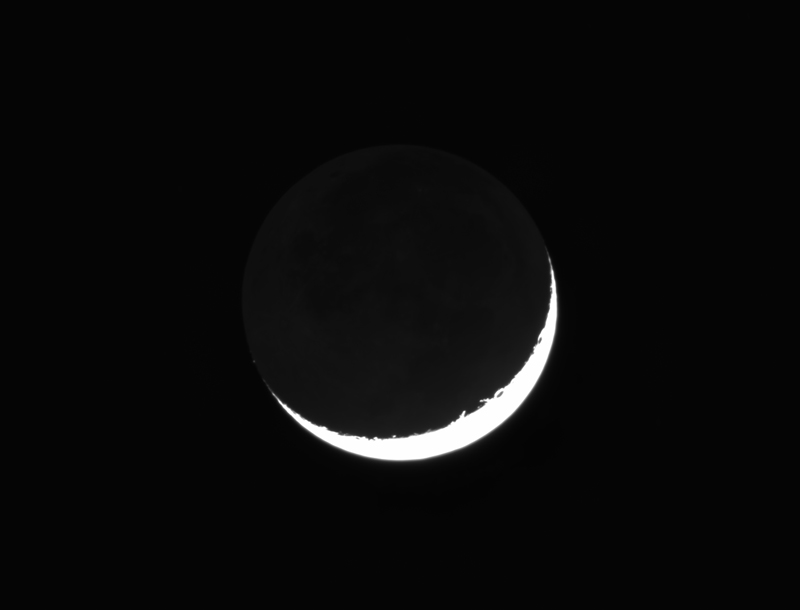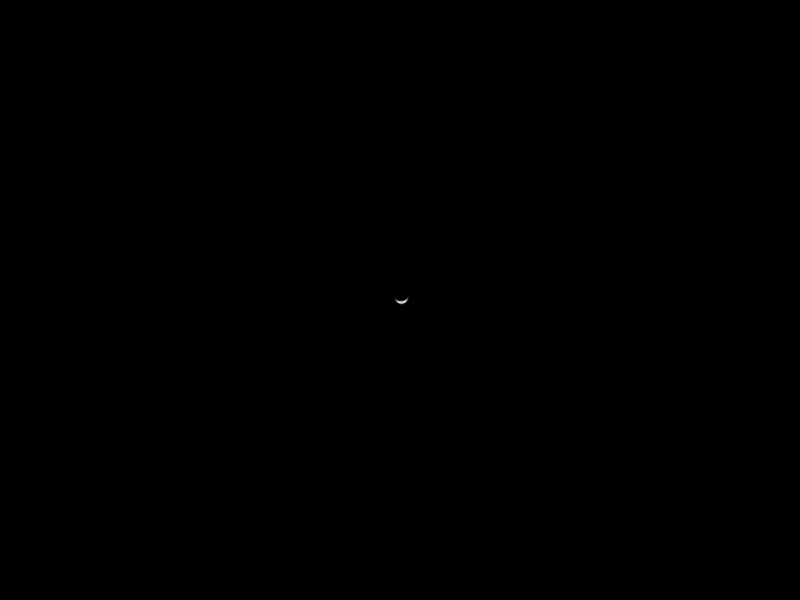what's missing from my previous crescent moon image is this:
no, earthshine is not a drink served at california dispensaries.
Earthshine is a glow which lights up the unlit part of the Moon because the Sun’s light reflects off the Earth's surface and back onto the Moon, best seen during the crescent moon. It is also sometimes called the old Moon in the new Moon's arms (or vice versa), or the Da Vinci glow, after Leonardo da Vinci, who explained the phenomenon for the first time in recorded history.
yes, i know this lies far in the realm of cub scout merit badges, but i was reminded of it when i tried to cut and paste an image of the first quarter moon for the eclipse test/comparison and could not define the edge of the moon. i had to eyeball it by empirically fitting a circle to the part that was visible.
when the moon is a thin crescent, it means the moon is almost directly between the earth and the moon, so the part of the moon lit by the sun is mostly facing away from us, while the dark side faces us. now from the lunar point of view, the earth is almost directly opposite the sun, so all the reflected light of the earth lights up the night sky (a full earth). this light brightens the surface of the moon just as a full moon lights our nights, the "earthlight" makes the dark surface of the moon easier for us to see.
in an odd twist, astronomers have used earthshine to detect life on earth, testing a technique that could potentially be used to detect life on other planets.
while shooting this image, i turned my low power imaging rig on the "dusk star", the bright star visible at sunset this month:
caught a tiny crescent venus, matching the moon.
Technical notes:
web cam, DMK 51 and the tiny tak, Takahashi FS-60C, 60 mm aperture at f/4.2 with a reducer. The field of view is approximately 96x72 arc minutes. Each image is a one minute video capture at approximately 12 fps, aligned in autostakkert, wavelets in registax.


No comments:
Post a Comment